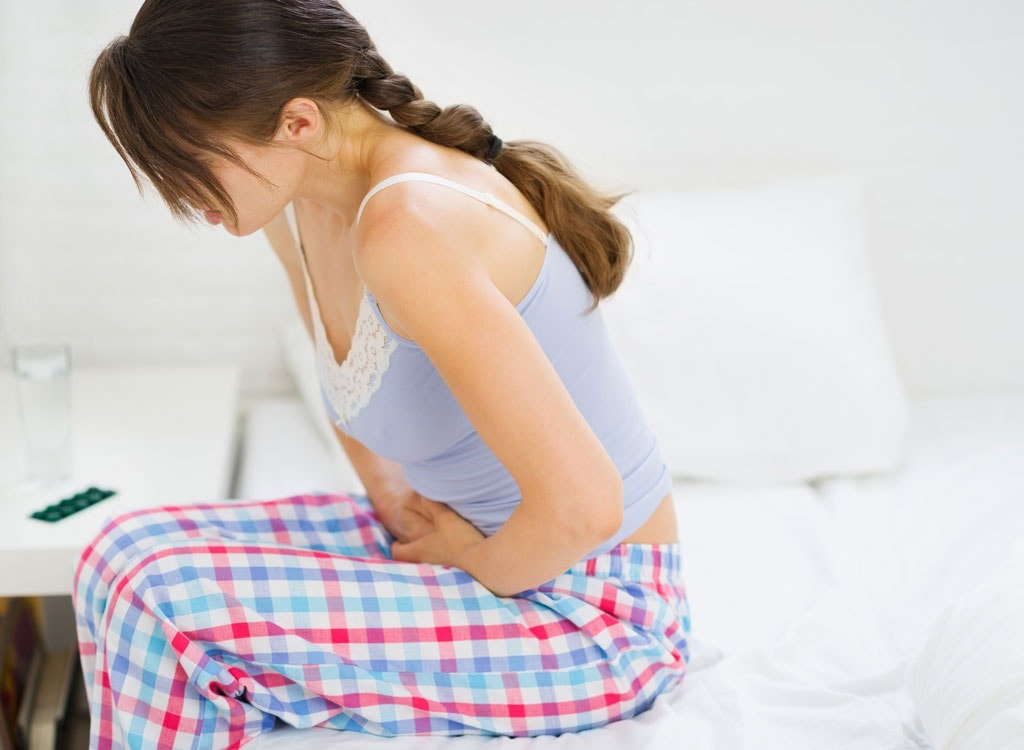|
Every girl born in this world experiences menstruation or periods, normal vaginal bleeding that happens as part of a woman’s monthly cycle. This monthly cycle can be severely painful in the case of some women and is called as dysmenorrhea. This is the most commonly reported menstrual disorder and more than 50% of menstruating women experience some kind of pain for 1-2 days every month.
Dysmenorrhea Dysmenorrhea can be classified as primary and secondary, each having different causes. Primary dysmenorrhea is the most commonly prevalent period pain (menstrual cramps) which is not caused due to other external factors but by natural chemicals called prostaglandins made inside the lining of the uterus. The pain can start a day or two before the periods and last for a few days in most women, while in some it can last for a much more prolonged period. The intensity of pain decreases with age. Usually there is intense pain just after a girl starts having her menstrual cycle and it becomes better as she ages. The pain also subsides or is minimal after giving birth to a baby. Secondary dysmenorrhea is caused due to a disorder in the reproductive system. It occurs at later stages of life than primary dysmenorrhea and the pain worsens over time, instead of getting better. The pain associated with secondary dysmenorrhea lasts longer than normal menstrual cramps, starting a few days before the onset of periods, reaching its peak during menstruation and continuing even after your periods ends. Bear the Pain Painful periods are mostly characterized by menstrual cramps which are a throbbing, cramping pain in your lower abdomen. Other common symptoms of pain include lower back pain, nausea, diarrhea and headaches. People often confuse this with premenstrual syndrome or PMS which is entirely different and whose symptoms include weight gain, bloating, irritability and fatigue. If you are interested in knowing more about PMS, please visit the website www.firsteatright.com. Instead of relying on medication to relieve pain, try generic pain relieving techniques such as:
If you have primary dysmenorrhea, your healthcare provider might suggest using hormonal birth control or pain reliever medication. If you have secondary dysmenorrhea, treatment depends on the source of the pain and in some cases, even surgery might be suggested. Women who exercise regularly have less menstrual pain comparatively. To prevent/reduce pain, it is recommended to make exercise a part of your daily activity. Comments are closed.
|
AVOID FRAUD. EAT SMART.+91 7846 800 800
AuthorDietitian & Nutritionist Dr. Nafeesa Imteyaz. Archives
July 2024
Categories
All
Dr. Nafeesa's Blog @blogspot |
- Home
- Written Testimonials
- Consult
- Clinics
- Blogs
-
Diet & Nutrition
- Diabetes Reversal
- IVF IUI not needed for PCOS PCOD Infertility
-
Medical Nutrition
>
-
Disease & Conditions
>
- Infertility | PCOS
- Diabetes Mellitus
- Cholesterol
- Hypothyroid
- Kidney Problems
- Hypertension
- Cardiovascular Diseases
- Liver Diseases
- Gastro intestinal disorder
- Cancer
- Metabolic Disorders
- Orthopedic Disorders
- Eating Disorders
- Dietary Recall
- Weight Record Filled By Clients
- Online Payment Transaction Details
- Online Clients Weight Check Form
- Our Program Package Service Charges
- Weight Record 2017 Clients
- Measurements sent by Clients
- Terms & Conditions Of Payment
- Thanks. Your Form is Submitted
- Video Testimonials
- Lifestyle & Wellness
- Lifestyle & Wellness Blog
- Allergy & Intolerance
- Weight Loss / Gain
- Weight Loss / Slimming Blog
-
Disease & Conditions
>
- Life Cycle Nutrition >
- Sports Nutrition >
- Integrity in Nutrition
- Knowledge Centre
© COPYRIGHT 2022. ALL RIGHTS RESERVED. FRST HEALTHCARE PVT LTD.
Dr. Nafeesa Imteyaz of First Eat Right clinic, is the Best Dietitian Nutritionist in Bangalore. Best Dietitian Nutritionist in Pune. Best Dietitian Nutritionist in Hyderabad. Best Dietitian Nutritionist in Chennai. Best Dietitian Nutritionist in Mumbai. Best Dietitian Nutritionist in Delhi. Best Dietitian Nutritionist in Kolkata.


